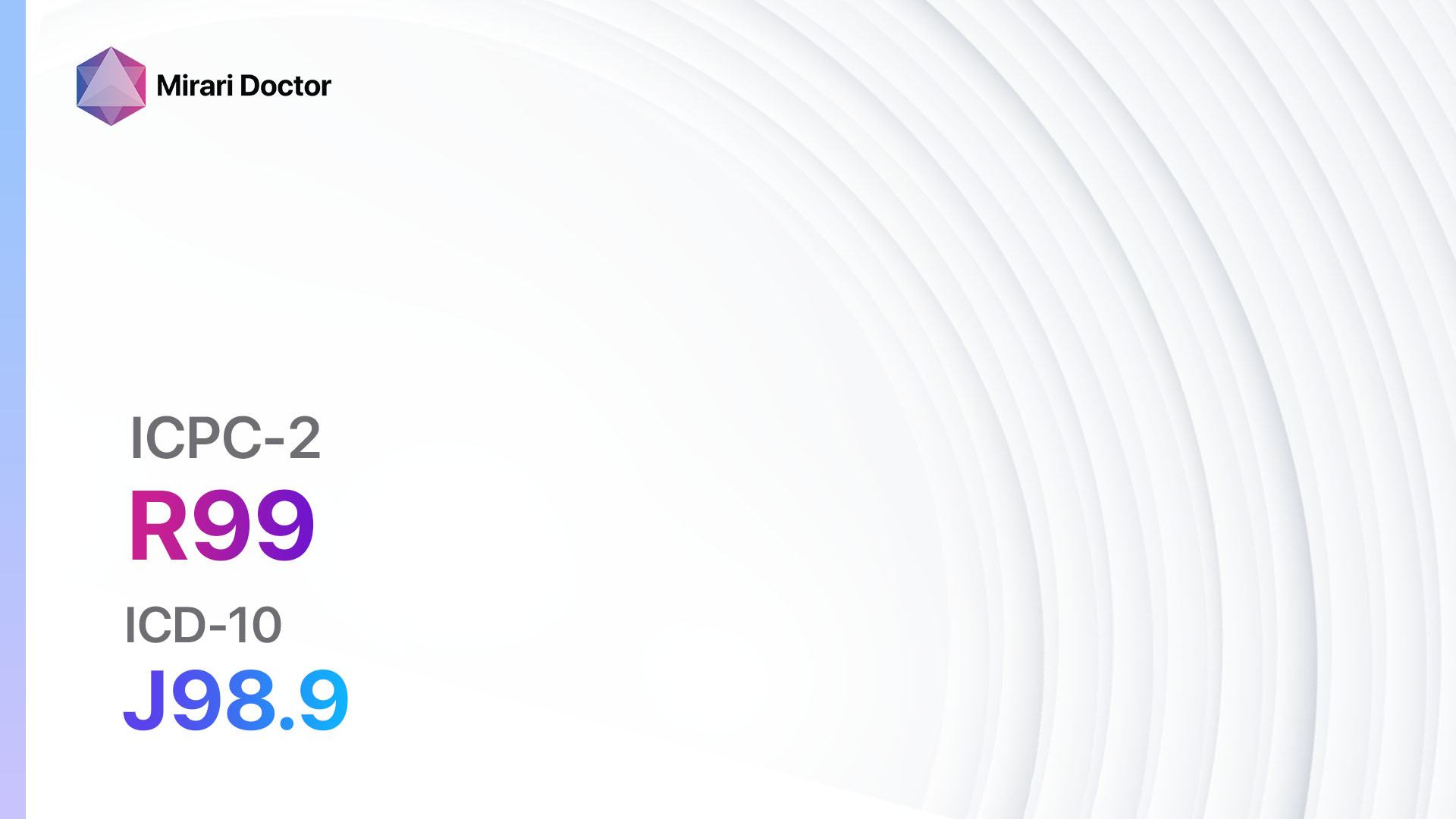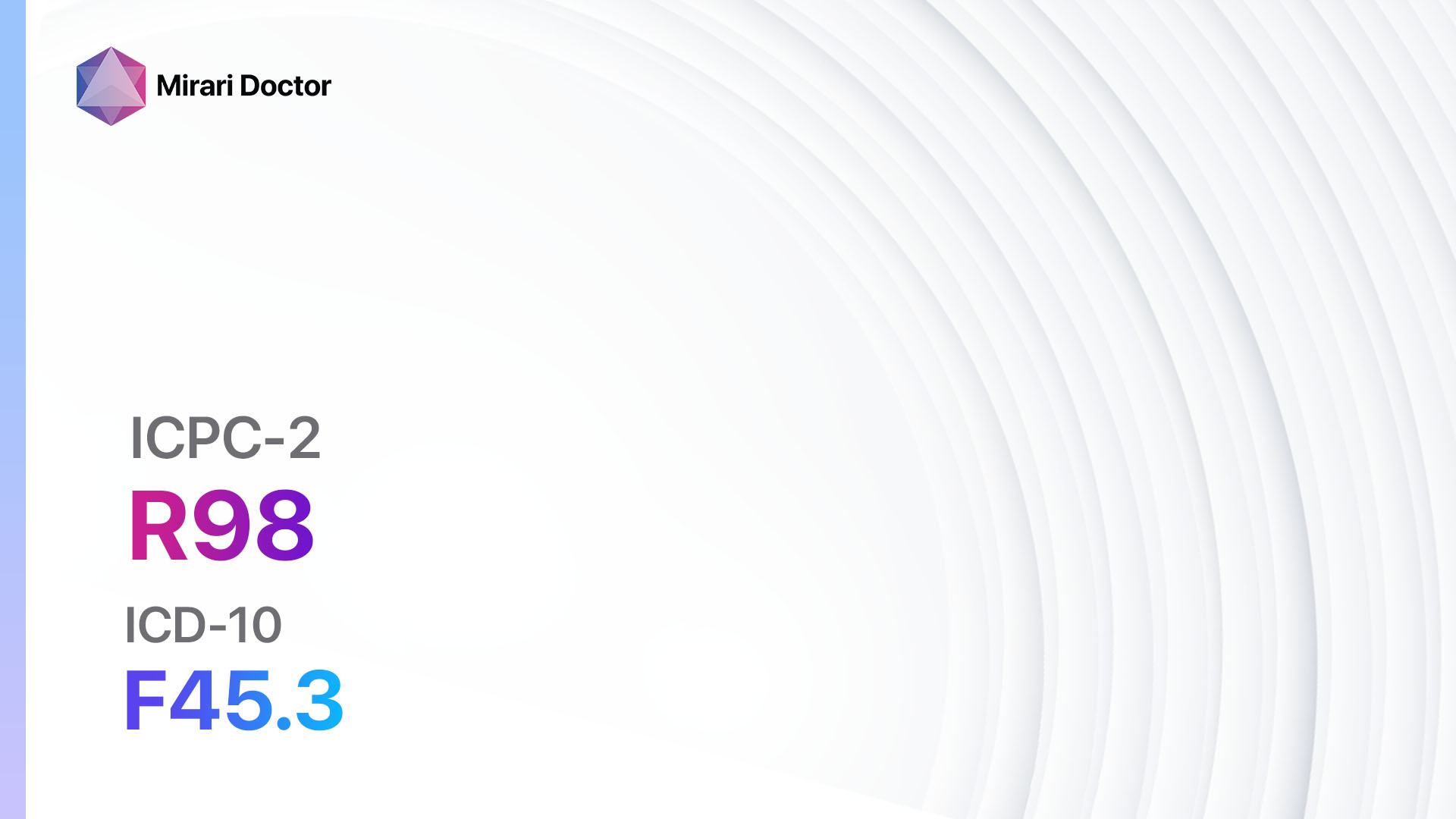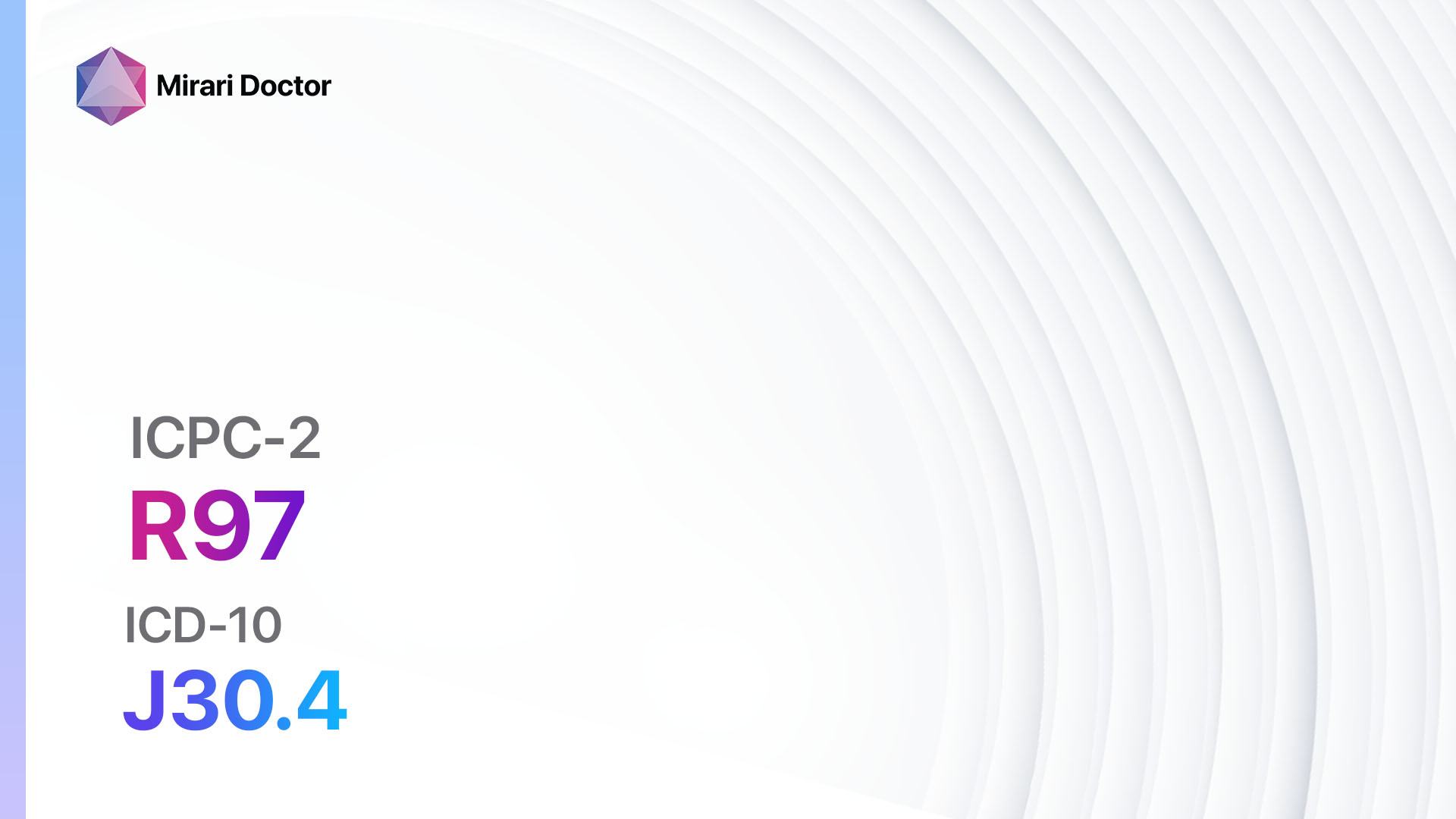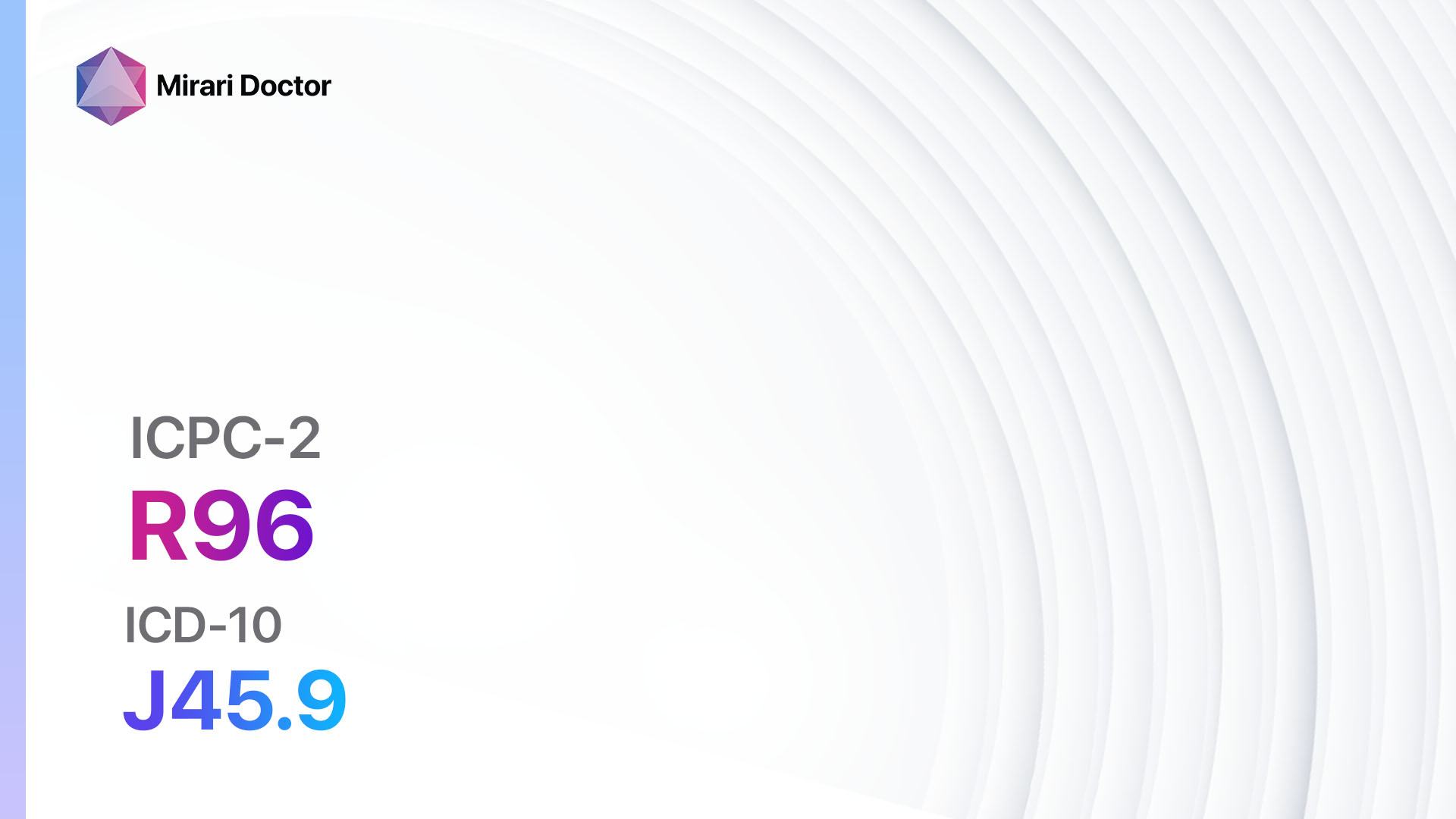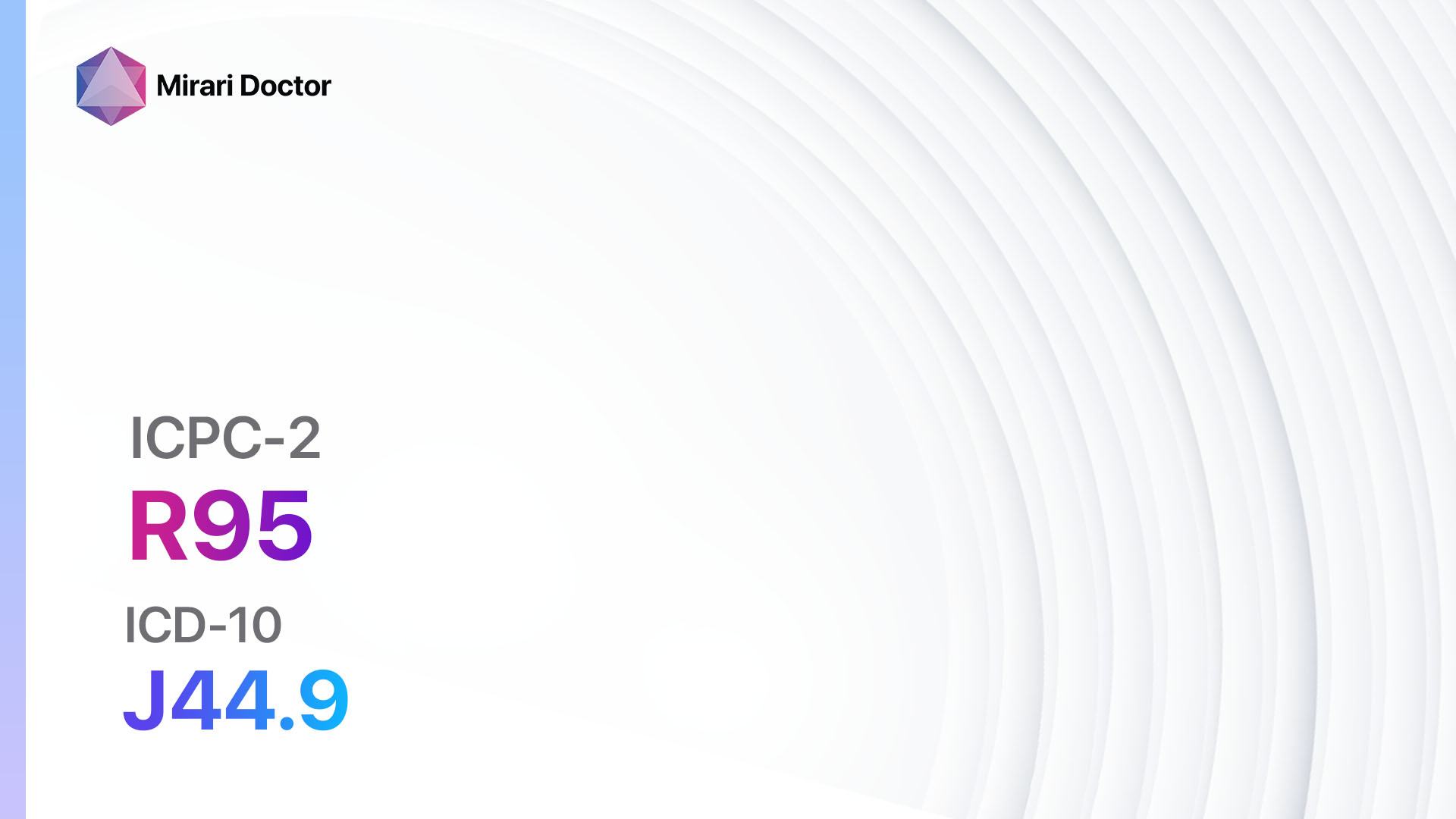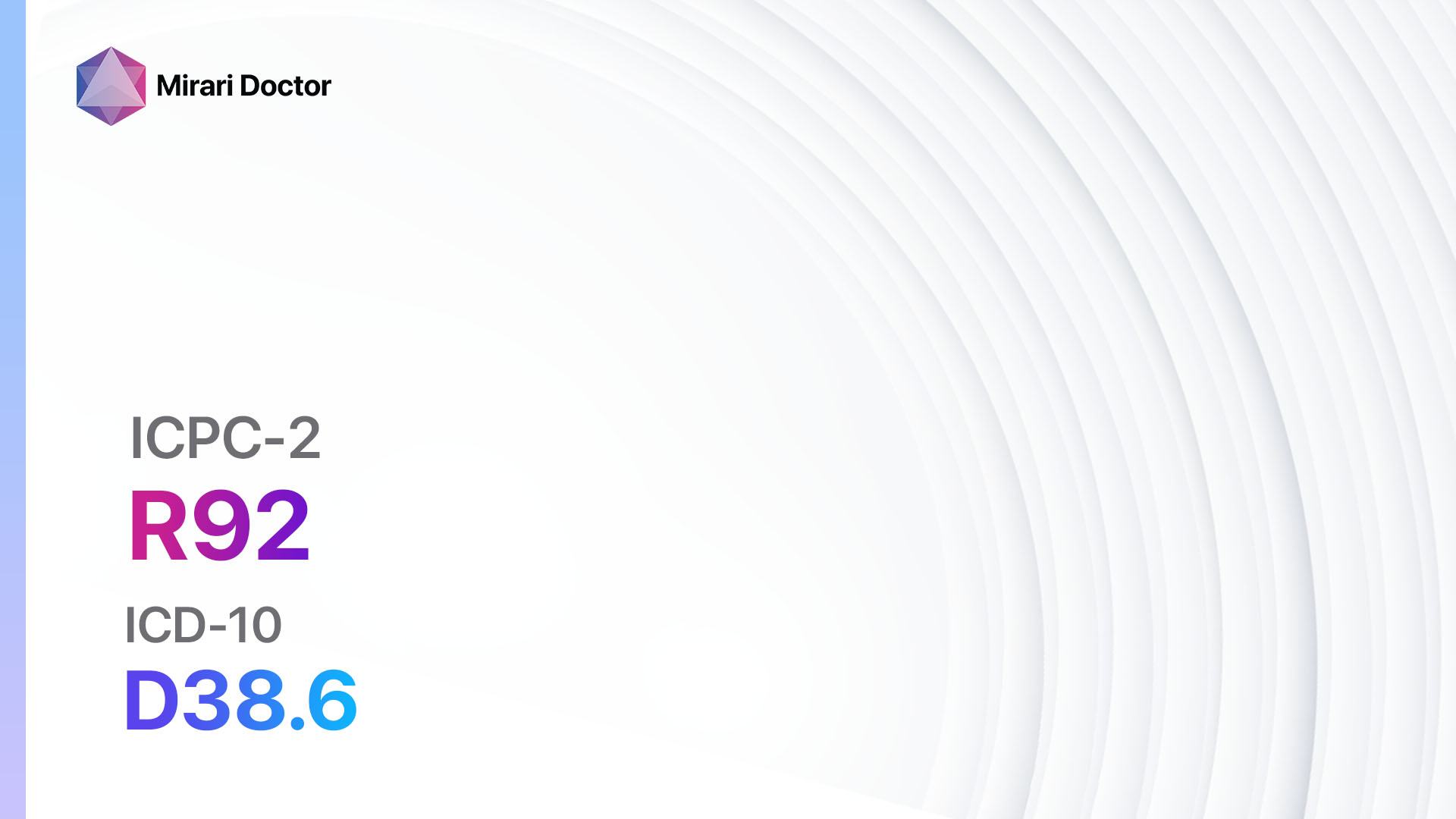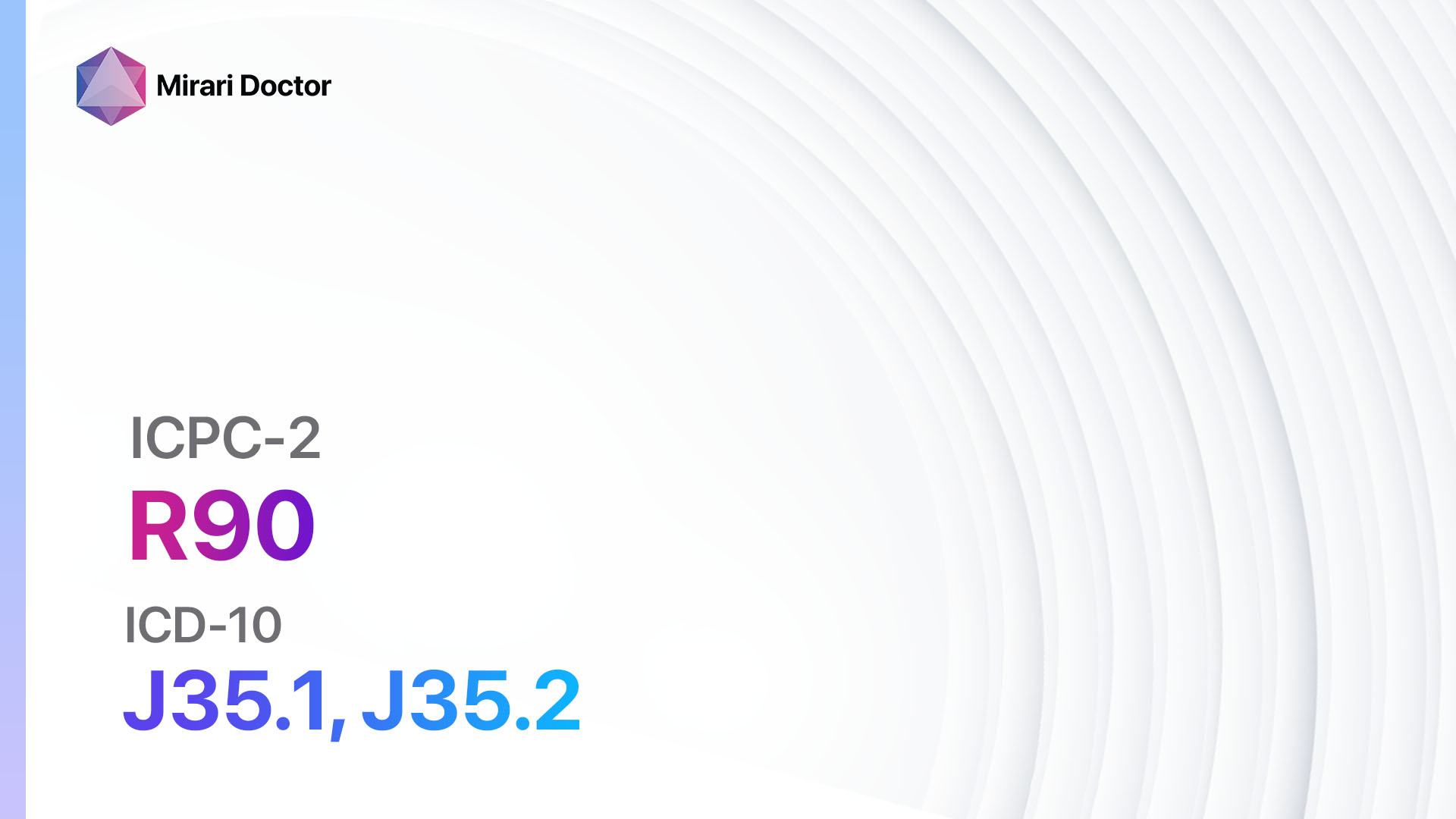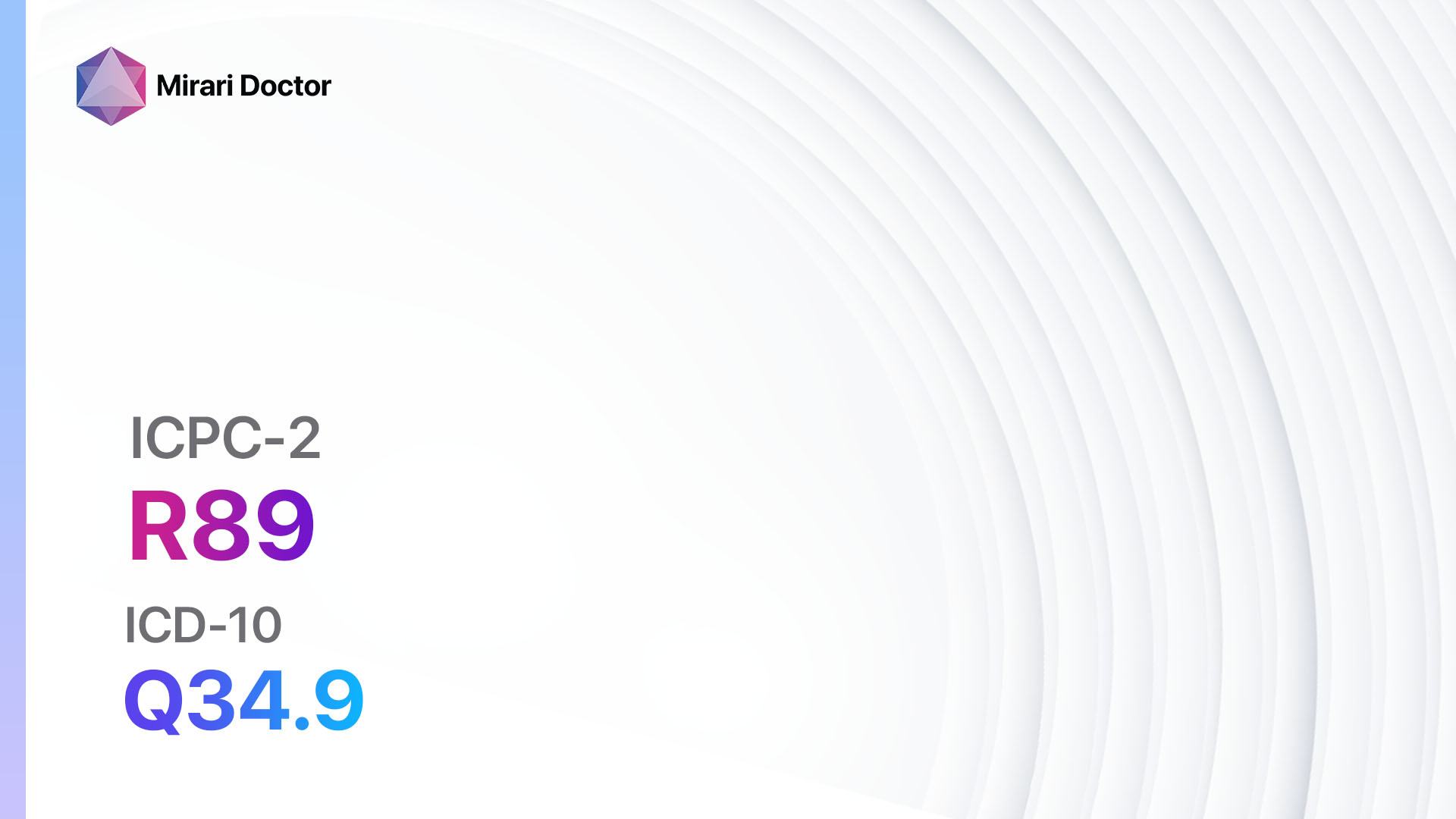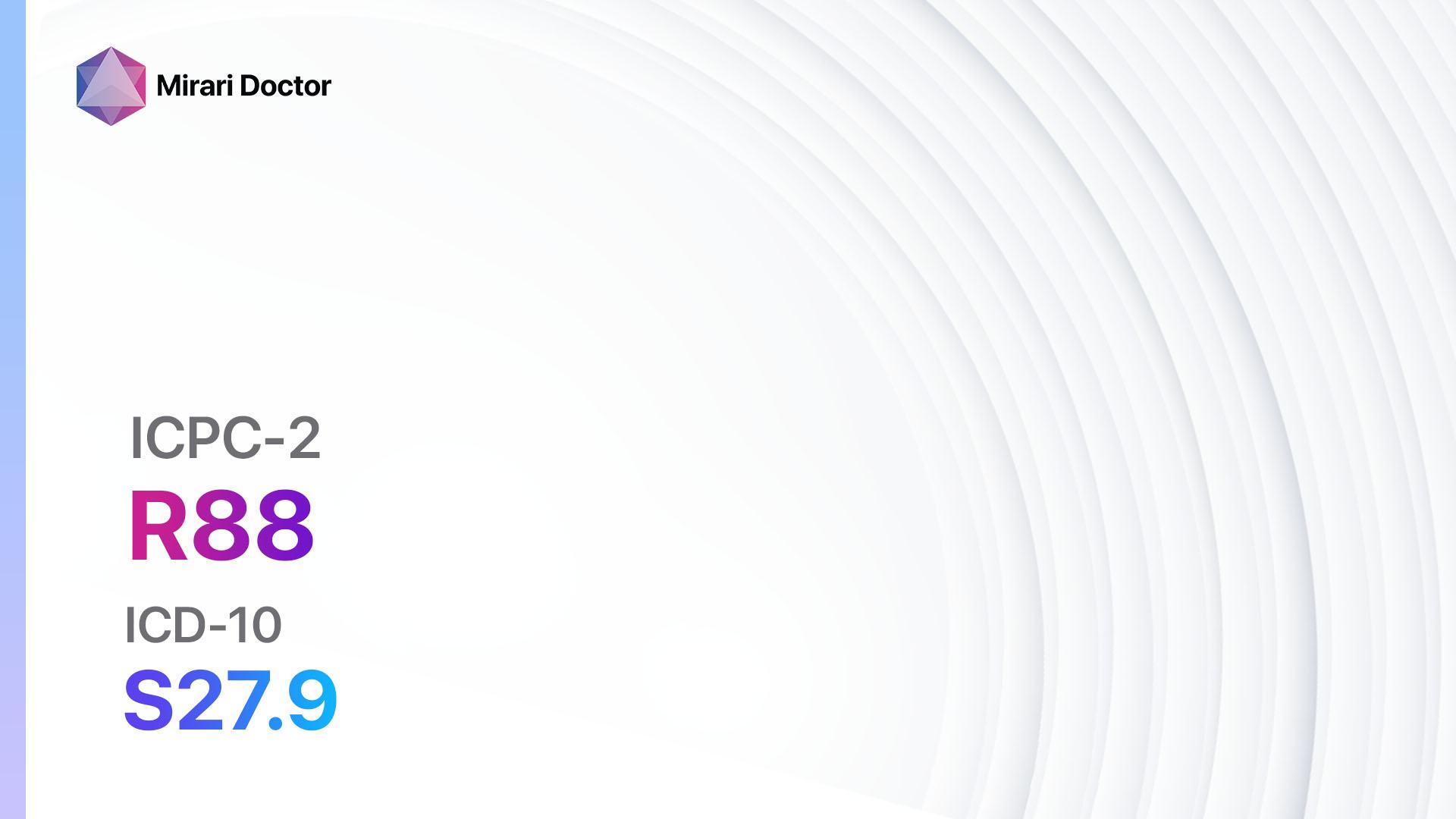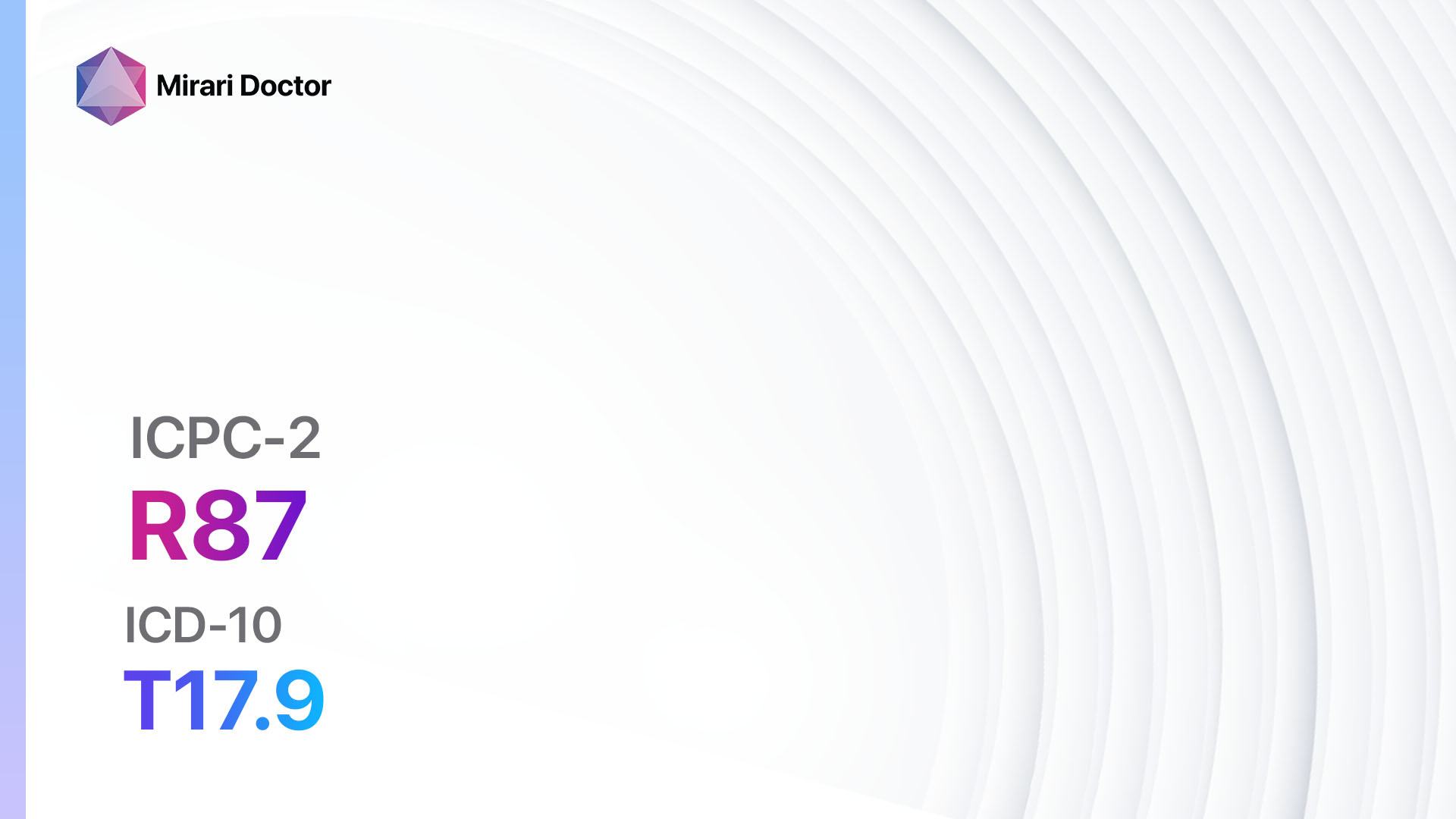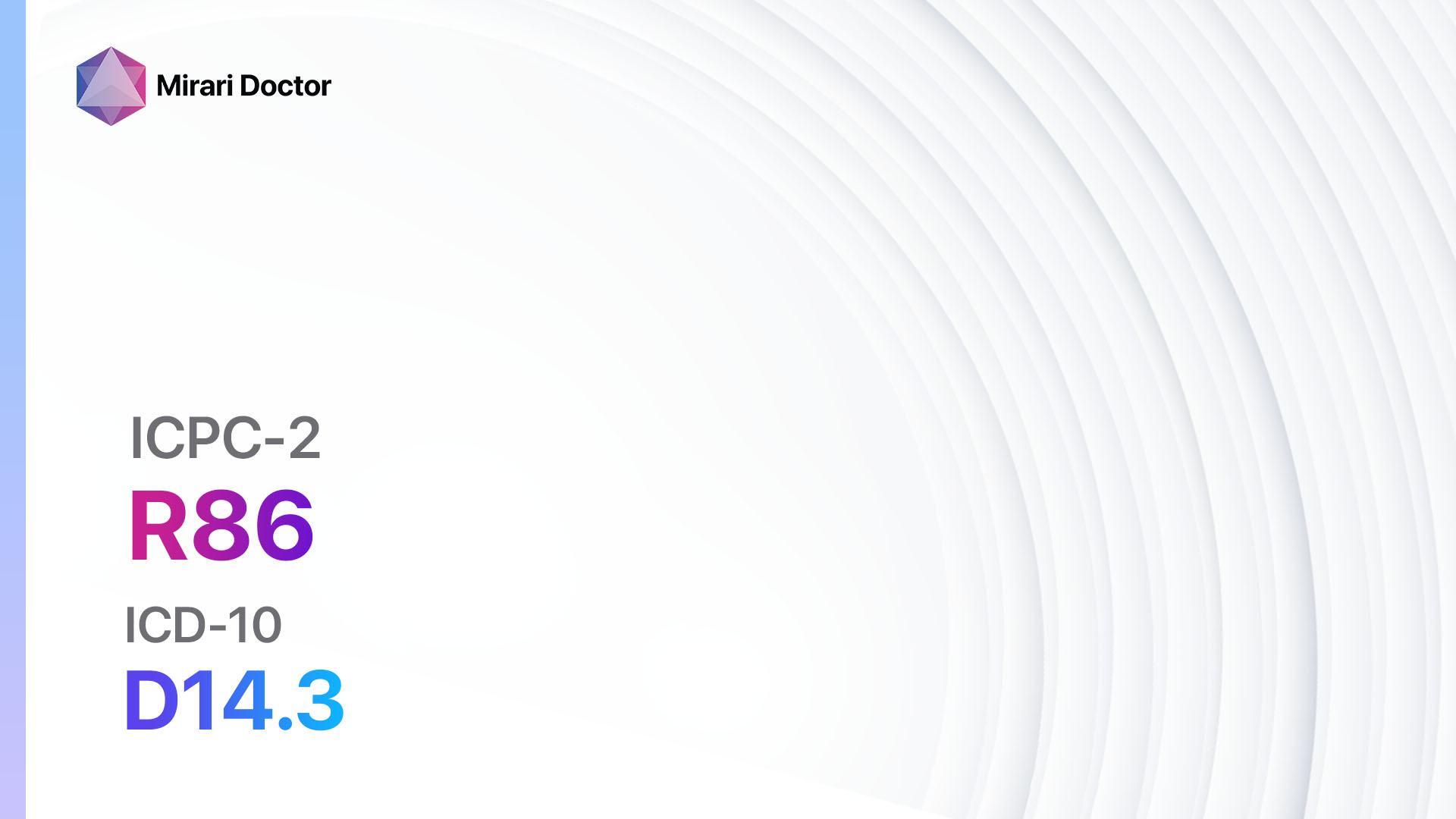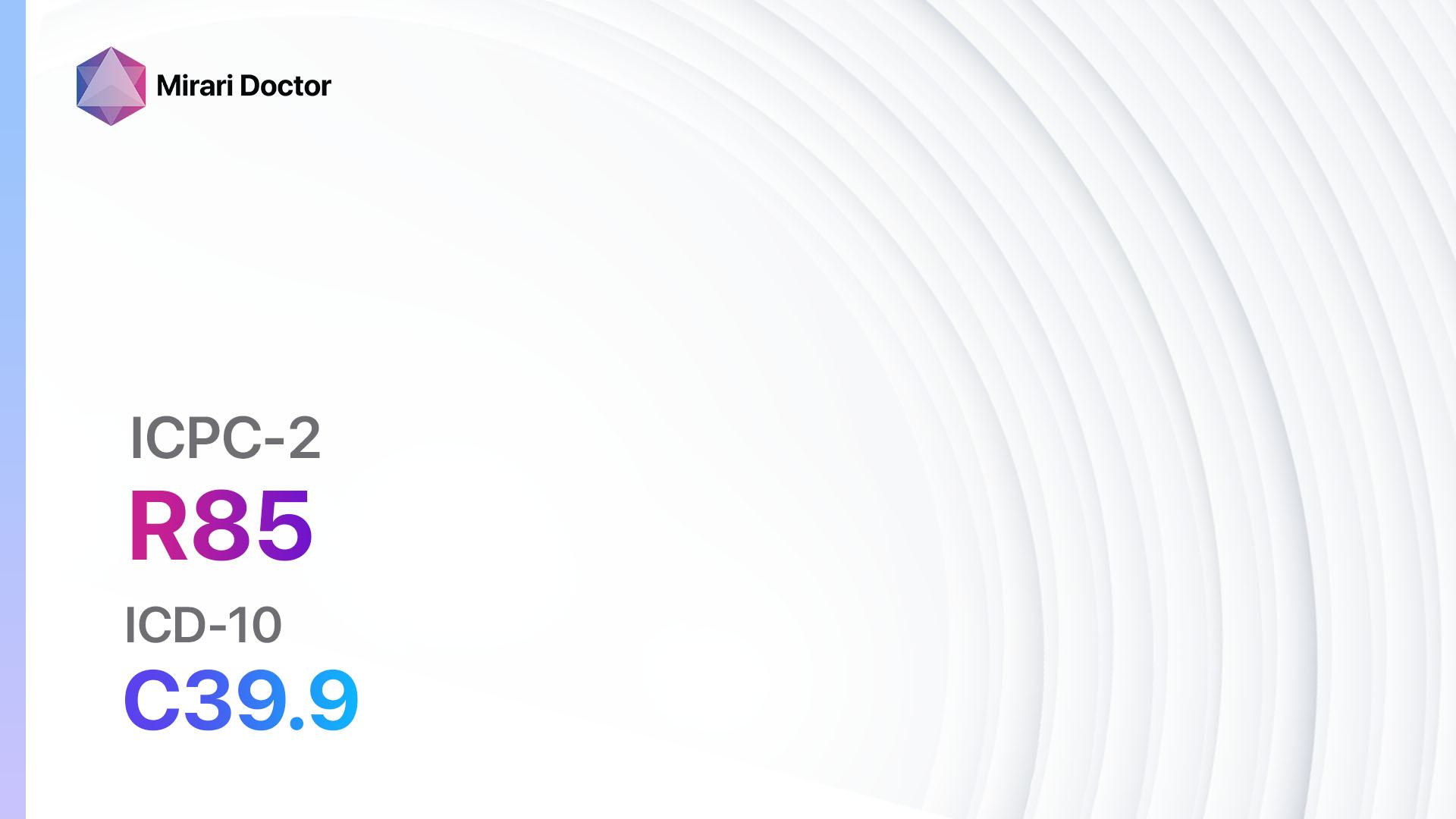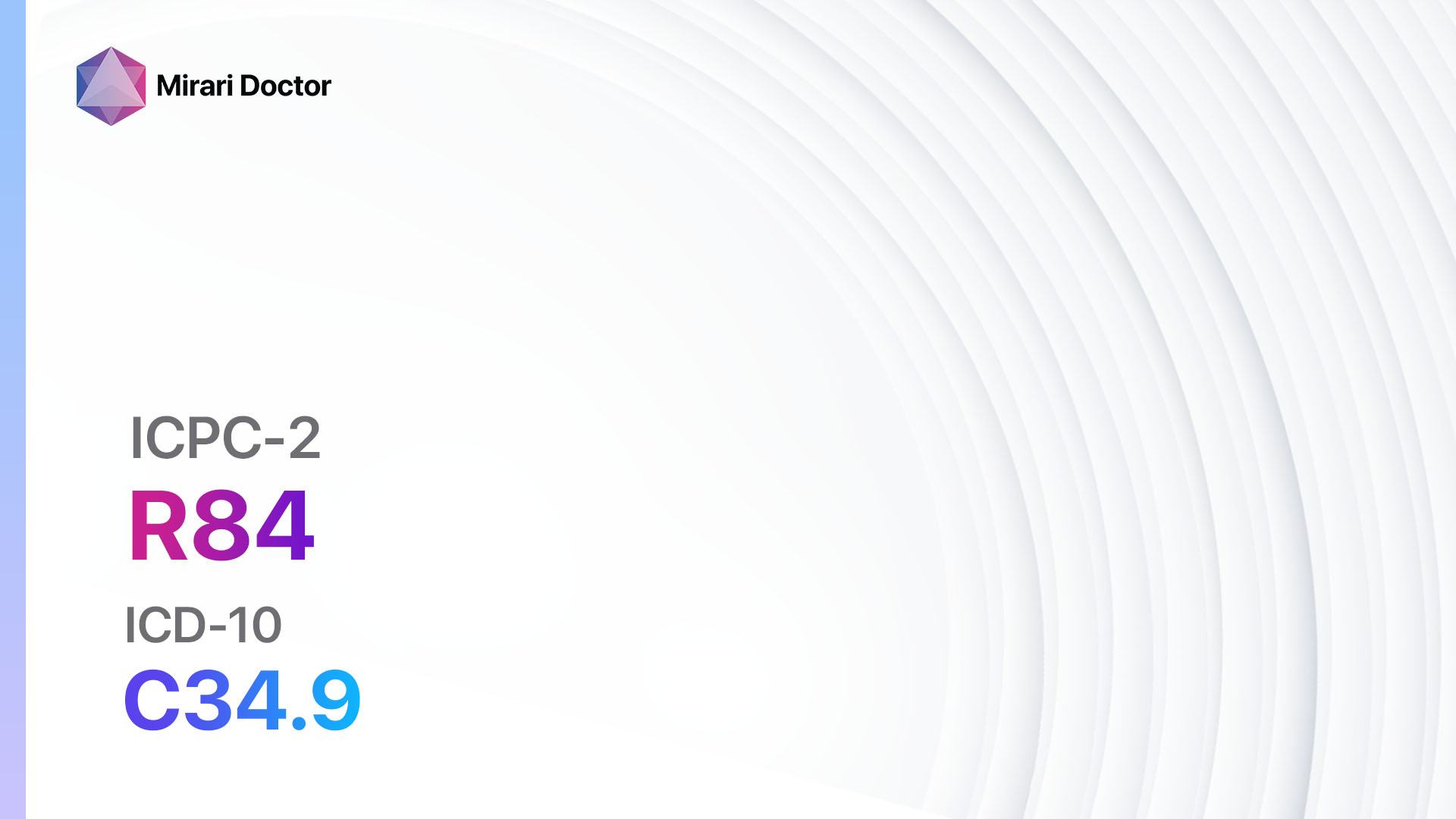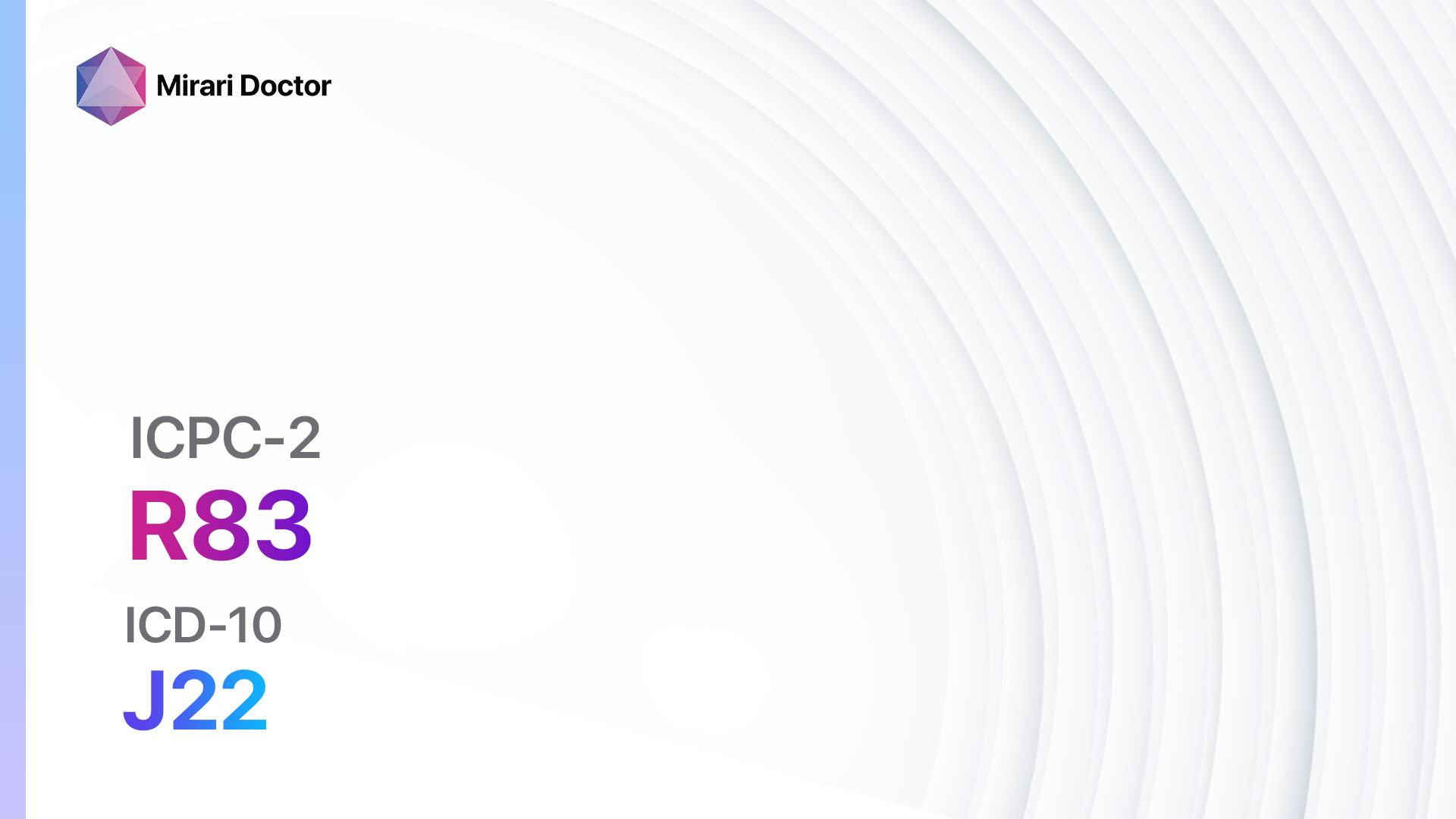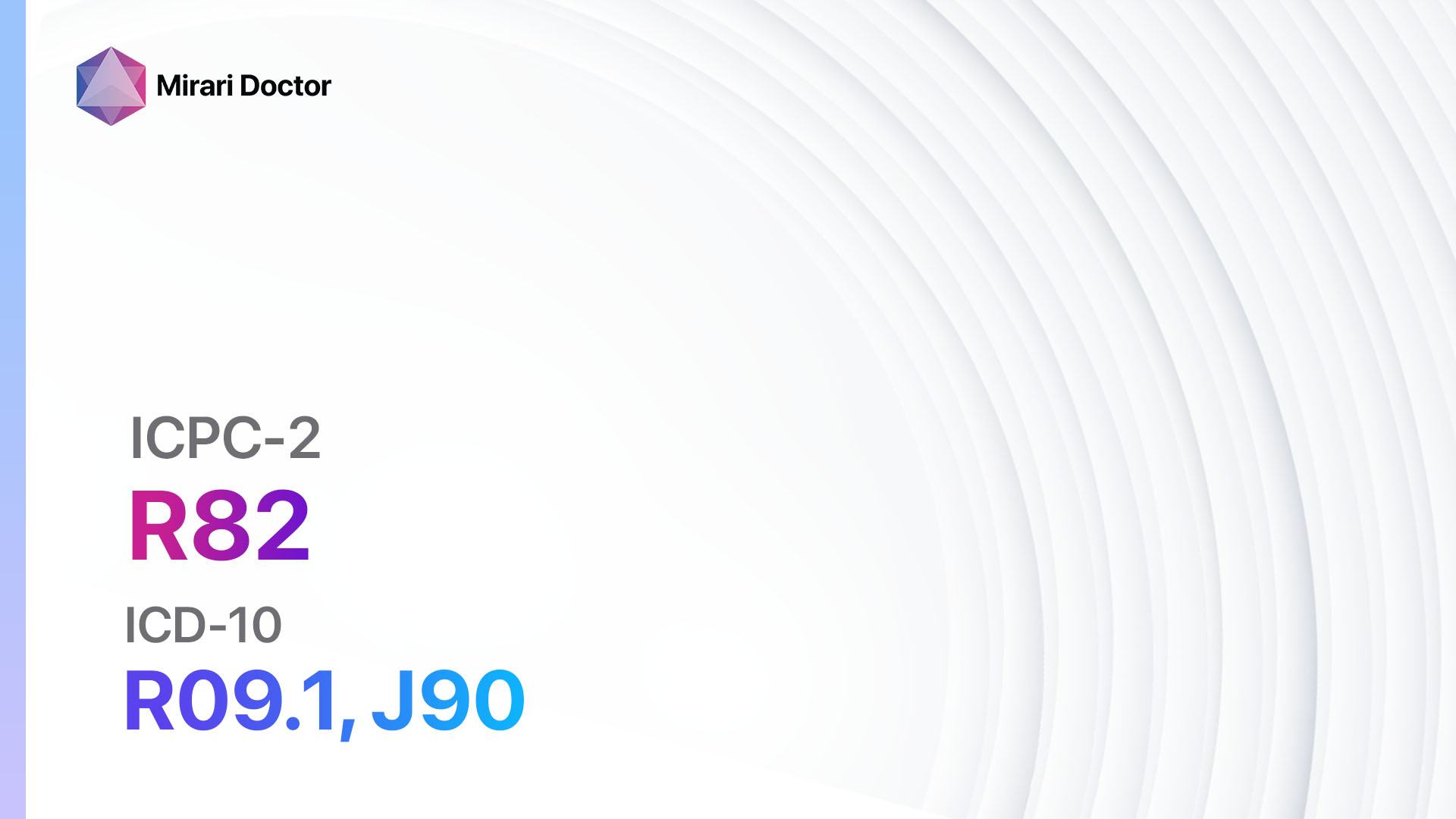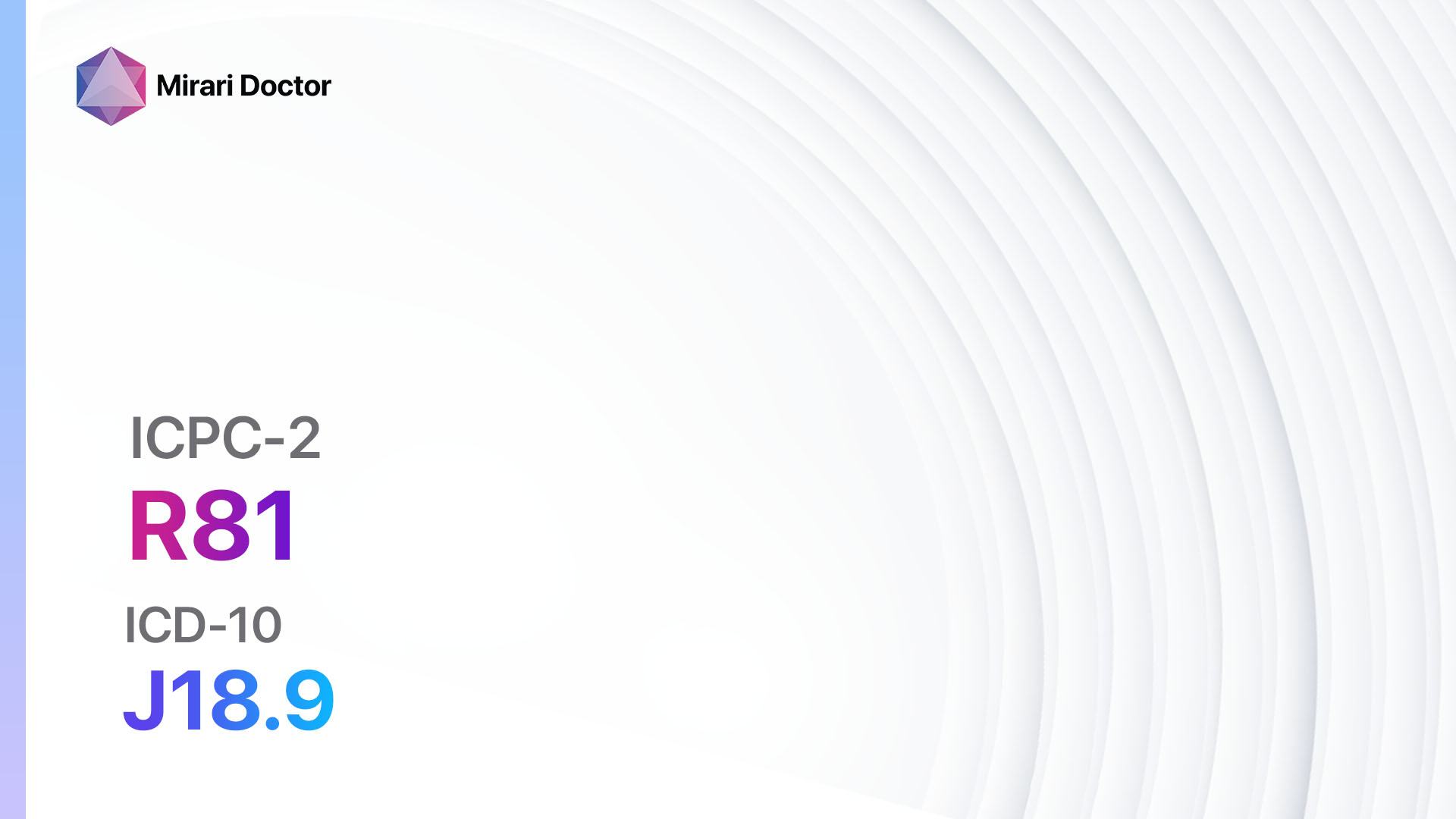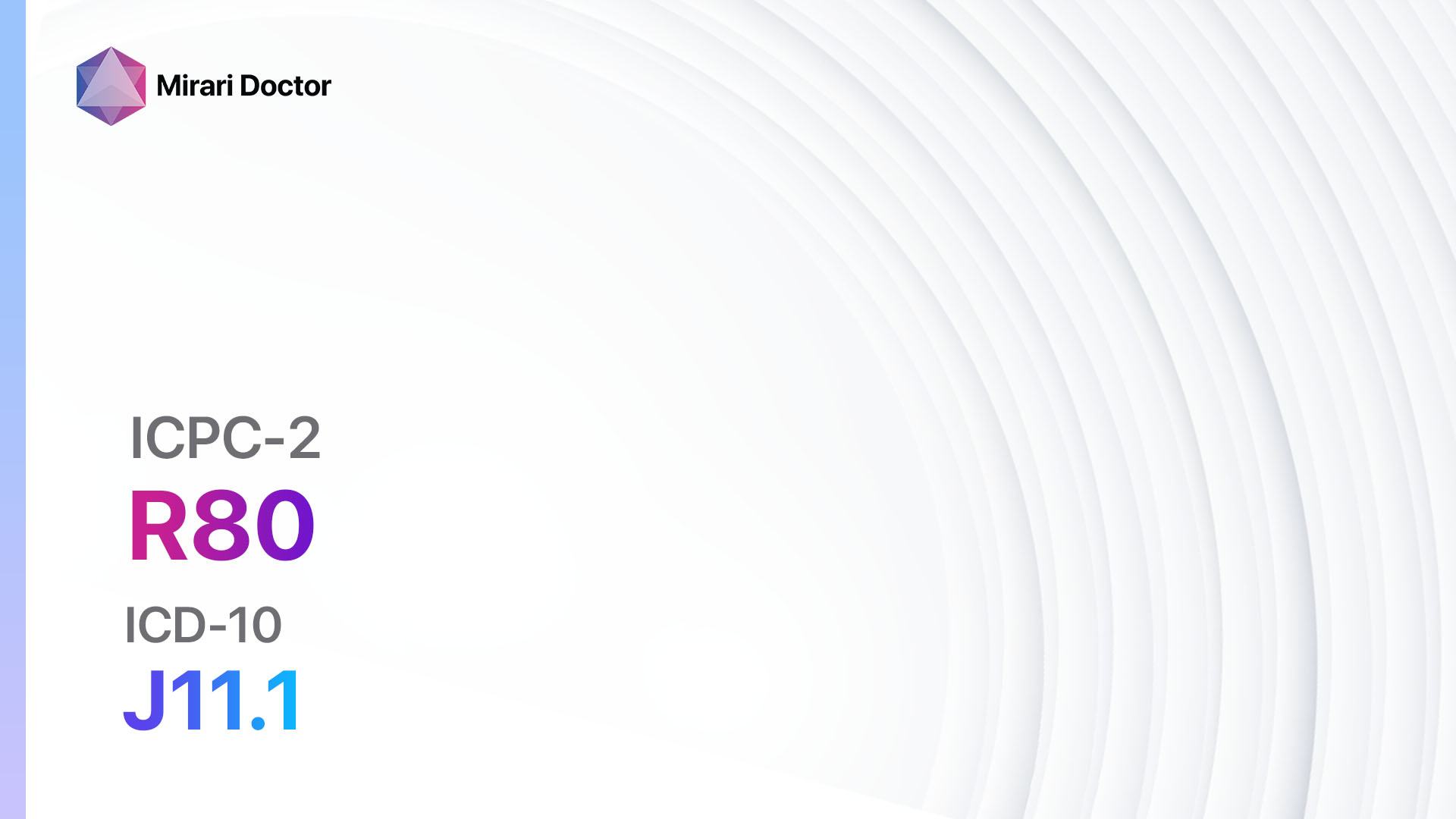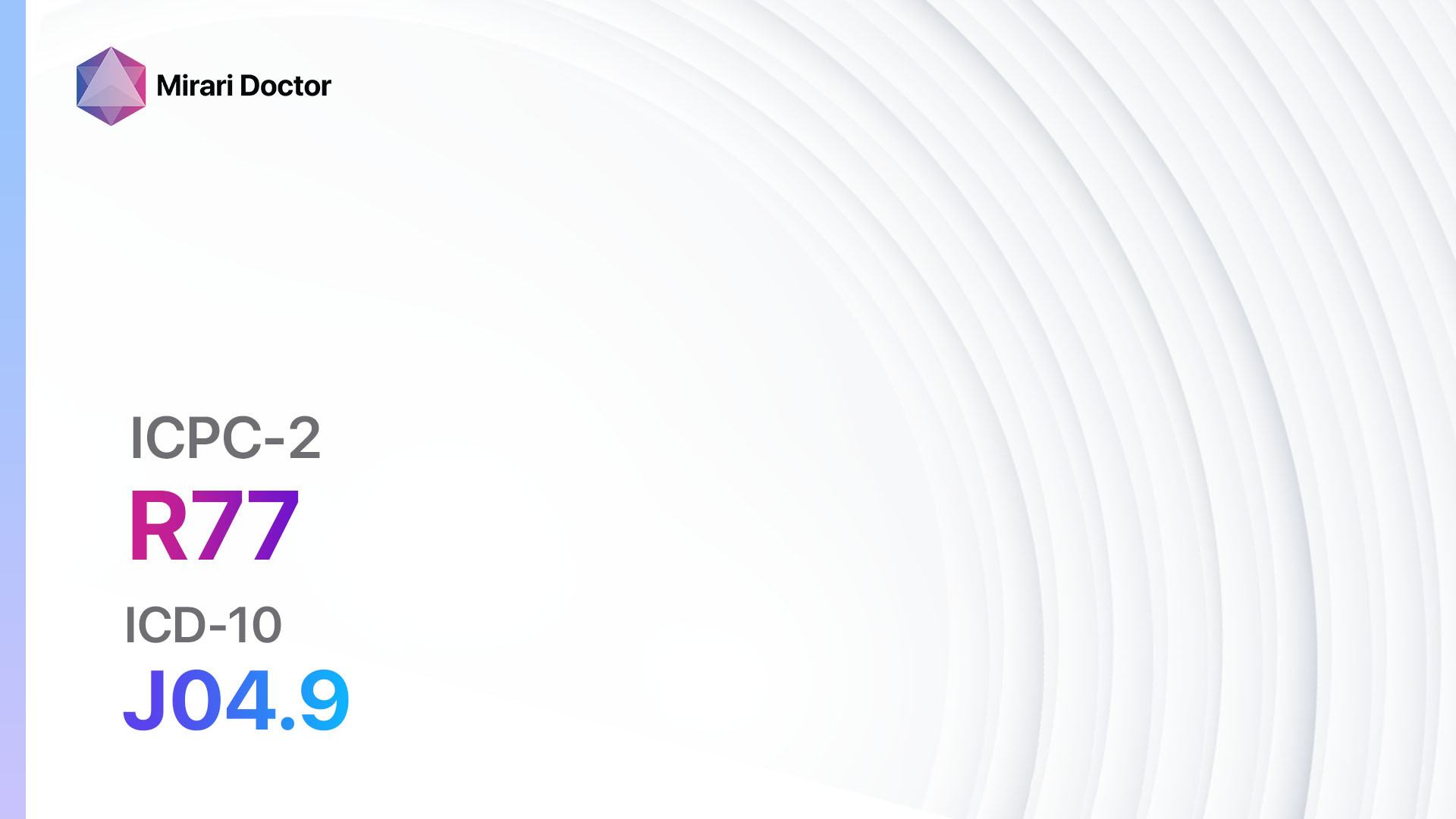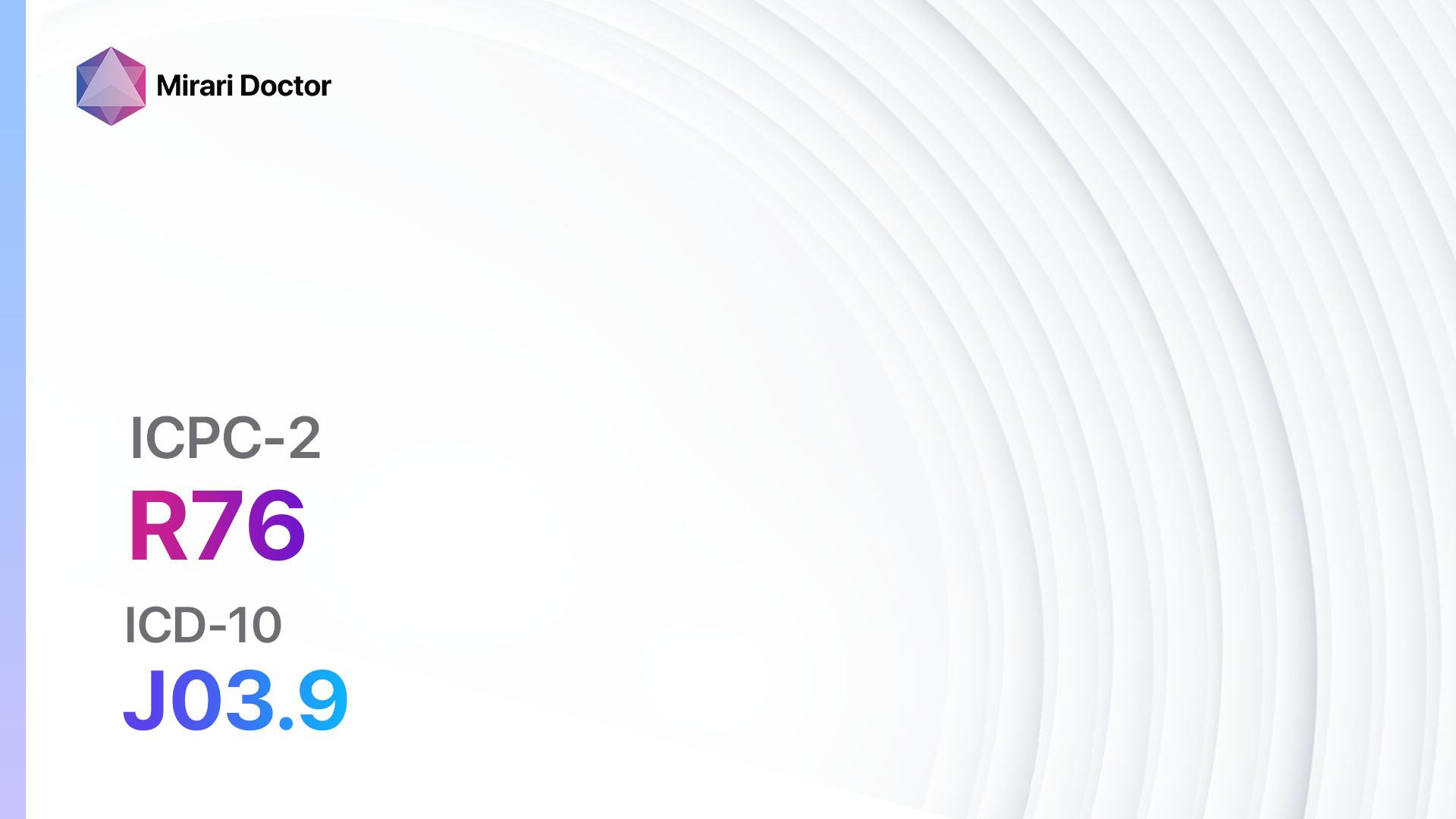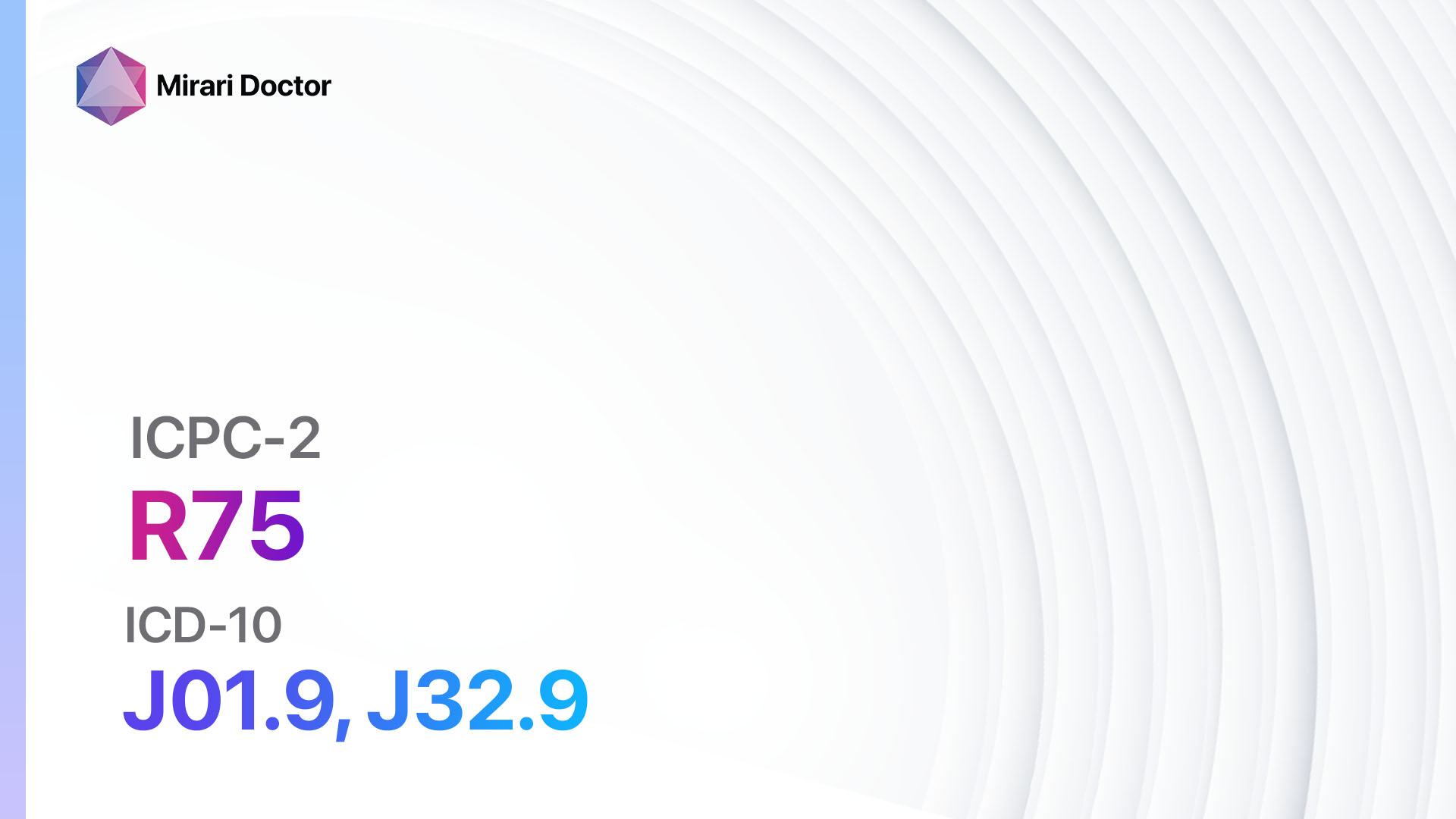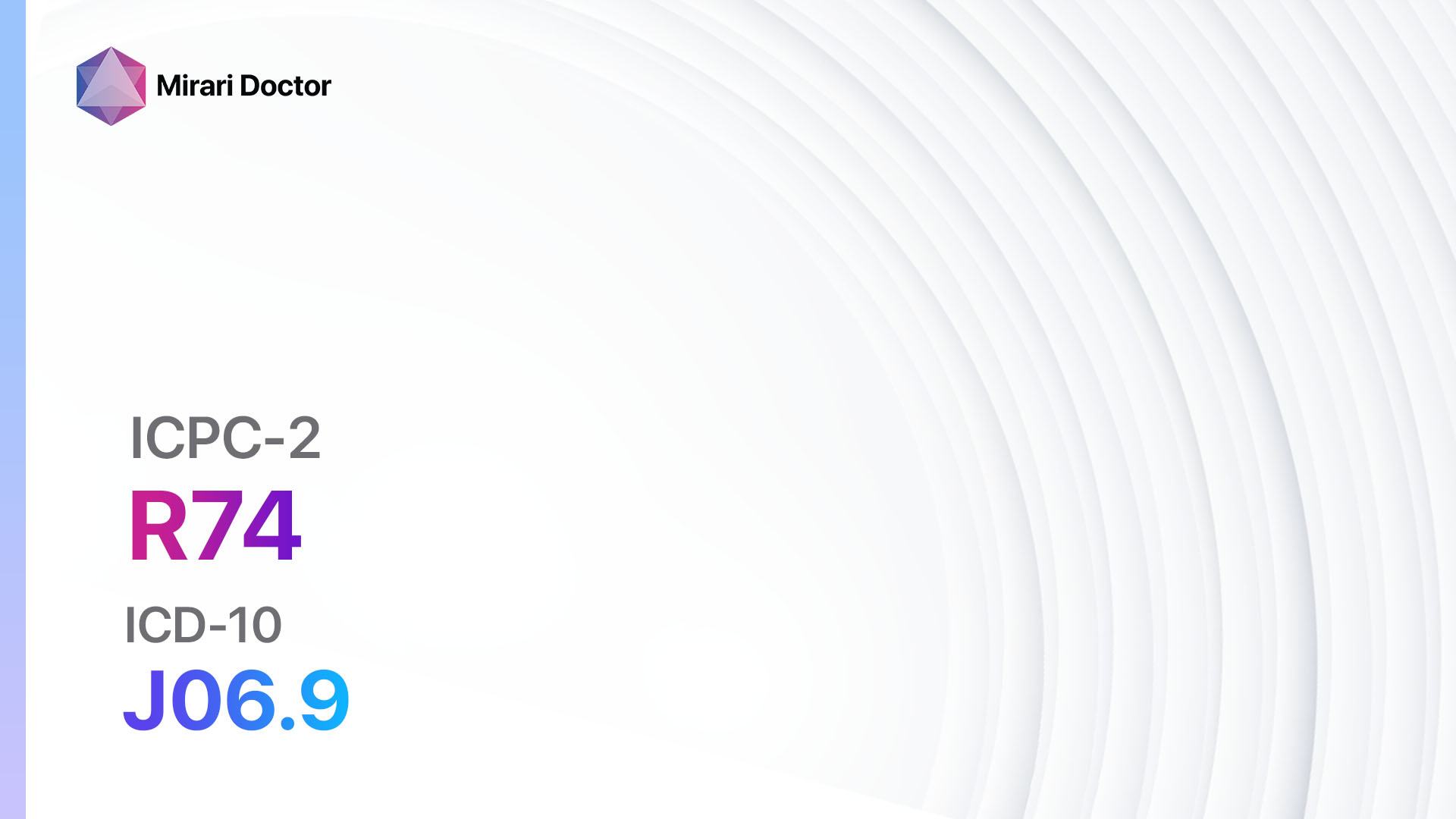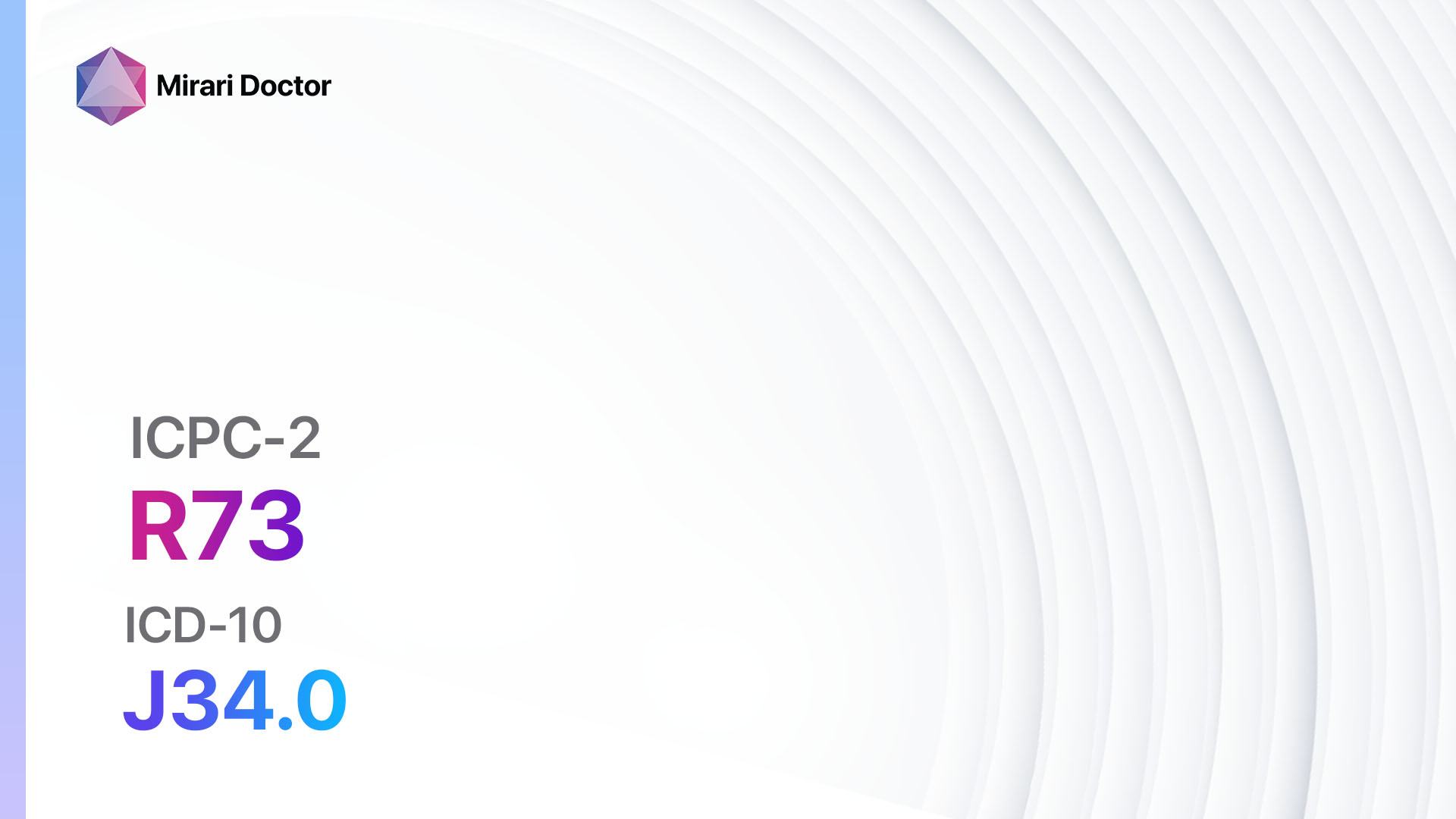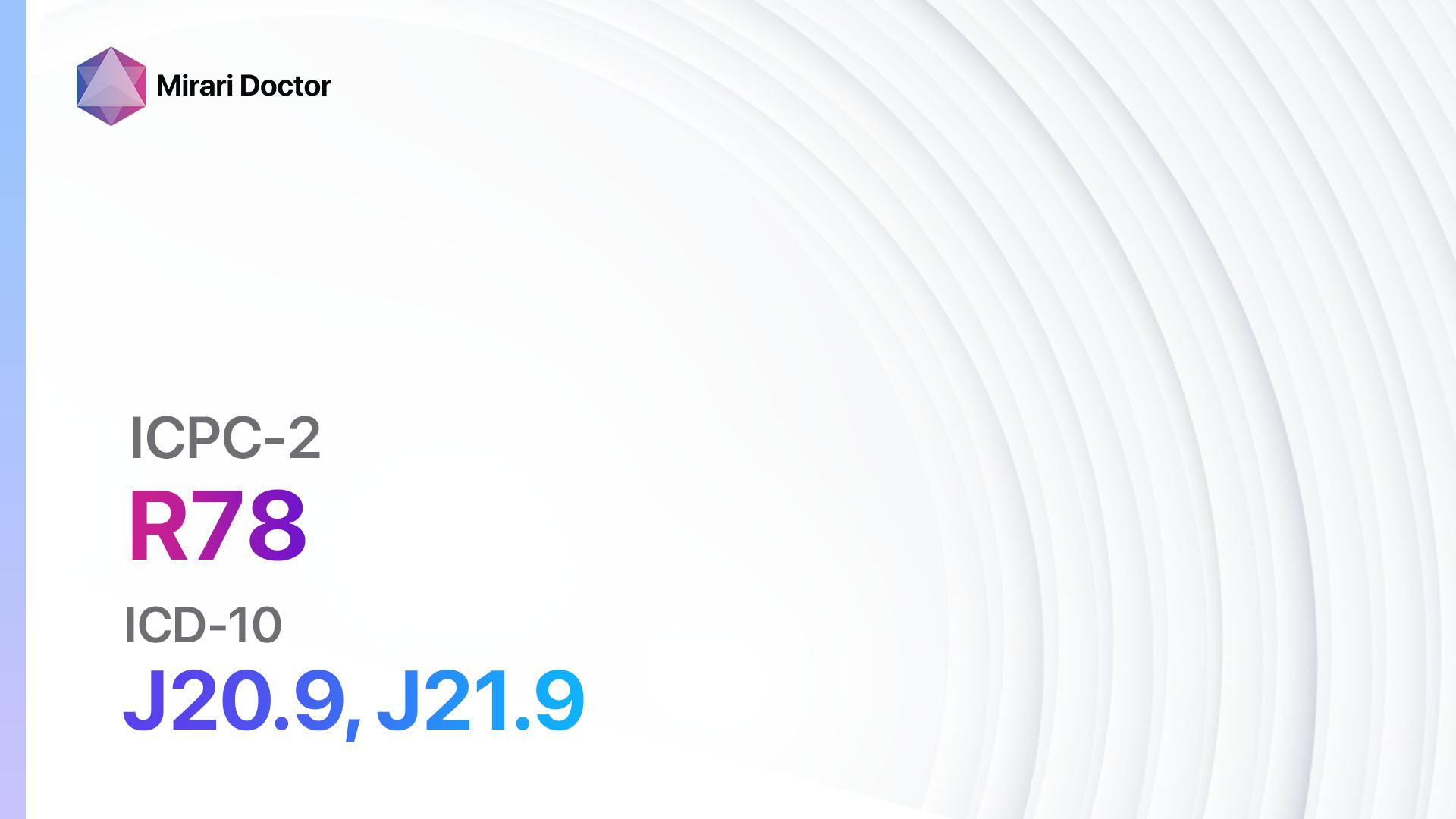
Introduction
Acute bronchitis/bronchiolitis is a common respiratory condition characterized by inflammation of the bronchial tubes and bronchioles. It is typically caused by a viral infection and is more common in children under the age of 2.[1] The aim of this guide is to provide a comprehensive overview of the symptoms, causes, diagnostic steps, possible interventions, and patient education for acute bronchitis/bronchiolitis.
Codes
- ICPC-2 Code: R78 Acute bronchitis/bronchiolitis[2]
- ICD-10 Code: J20.9 Acute bronchitis, unspecified, J21.9 Acute bronchiolitis, unspecified[3]
Symptoms
- Cough: Dry or productive cough that may last for several weeks.
- Chest discomfort: Feeling of tightness or pressure in the chest.
- Shortness of breath: Difficulty breathing, especially during physical activity.
- Wheezing: High-pitched whistling sound while breathing.
- Fatigue: Feeling tired or weak.
- Mild fever: Low-grade fever may be be present.[4]
Causes
- Viral infection: Most cases of acute bronchitis/bronchiolitis are caused by viruses, such as rhinovirus, influenza virus, or respiratory syncytial virus (RSV).[5]
- Bacterial infection: In some cases, acute bronchitis/bronchiolitis may be caused by bacterial infections, such as Mycoplasma pneumoniae or Bordetella pertussis.
- Environmental factors: Exposure to irritants, such as tobacco smoke, air pollution, or chemical fumes, can increase the risk of developing acute bronchitis/bronchiolitis.[6]
Diagnostic Steps
Medical History
- Gather information about the patient’s symptoms, including the duration and severity of cough, chest discomfort, shortness of breath, wheezing, fatigue, and fever.
- Ask about any recent viral or bacterial infections, exposure to irritants, or underlying medical conditions.
- Assess the patient’s risk factors, such as age (children under 2 are at higher risk), smoking history, or compromised immune system.[7]
Physical Examination
- Listen to the patient’s lungs using a stethoscope to check for abnormal breath sounds, such as wheezing or crackles.
- Assess the patient’s respiratory rate and effort.
- Check for signs of respiratory distress, such as increased work of breathing or use of accessory muscles.
- Evaluate the patient’s general appearance, including skin color and level of alertness.[8]
Laboratory Tests
- Complete blood count (CBC): To assess for elevated white blood cell count, which may indicate an infection.
- Viral panel: To identify the specific viral pathogen causing the infection.
- Bacterial culture: If there is suspicion of a bacterial infection, a sputum or throat swab culture may be performed to identify the bacteria and determine antibiotic susceptibility.[9]
Diagnostic Imaging
- Chest X-ray: To rule out other respiratory conditions, such as pneumonia or bronchiolitis obliterans.
- Pulmonary function tests: To assess lung function and determine the severity of airflow obstruction.[10]
Other Tests
- Pulse oximetry: To measure the oxygen saturation levels in the blood.
- Nasopharyngeal swab: To test for respiratory viruses, such as RSV or influenza.
- Allergy testing: If there is suspicion of an allergic component, allergy testing may be performed to identify specific allergens.
Follow-up and Patient Education
- Advise the patient to rest and drink plenty of fluids to help relieve symptoms and promote recovery.
- Educate the patient about the importance of hand hygiene to prevent the spread of infection.
- Provide information on when to seek medical attention if symptoms worsen or if there is difficulty breathing.
- Discuss the potential complications of acute bronchitis/bronchiolitis, such as pneumonia or respiratory failure.
Possible Interventions
Traditional Interventions
Medications:
Top 5 drugs for Acute bronchitis/bronchiolitis:
- Bronchodilators (e.g., Albuterol, Salbutamol):
- Cost: Generic versions can be $10-$50/month.
- Contraindications: Hypersensitivity to the medication.
- Side effects: Tremor, increased heart rate.
- Severe side effects: Cardiac arrhythmias, chest pain.
- Drug interactions: Beta-blockers, diuretics.
- Warning: Use with caution in patients with cardiovascular disease.
- Corticosteroids (e.g., Prednisone, Dexamethasone):
- Cost: Generic versions can be $10-$50/month.
- Contraindications: Active fungal or bacterial infection.
- Side effects: Increased appetite, mood changes.
- Severe side effects: Adrenal suppression, osteoporosis.
- Drug interactions: Nonsteroidal anti-inflammatory drugs (NSAIDs), anticoagulants.
- Warning: Long-term use may require tapering to avoid adrenal insufficiency.
- Antibiotics (e.g., Amoxicillin, Azithromycin):
- Cost: Generic versions can be $10-$50/month.
- Contraindications: Allergy to the specific antibiotic.
- Side effects: Upset stomach, diarrhea.
- Severe side effects: Severe allergic reactions, Clostridium difficile infection.
- Drug interactions: Warfarin, oral contraceptives.
- Warning: Antibiotics should only be used if there is evidence of bacterial infection.
- Antipyretics (e.g., Acetaminophen, Ibuprofen):
- Cost: Generic versions can be $5-$10/month.
- Contraindications: Allergy to the specific medication.
- Side effects: Upset stomach, rash.
- Severe side effects: Liver damage, kidney damage.
- Drug interactions: Warfarin, alcohol.
- Warning: Follow recommended dosages and avoid overdose.
- Mucolytics (e.g., Guaifenesin):
- Cost: Generic versions can be $5-$10/month.
- Contraindications: Allergy to the specific medication.
- Side effects: Upset stomach, dizziness.
- Severe side effects: Severe allergic reactions.
- Drug interactions: None reported.
- Warning: Drink plenty of fluids while taking mucolytics to help loosen mucus.
Alternative Drugs:
- Herbal remedies (e.g., Echinacea, Pelargonium sidoides): Some herbal remedies may help relieve symptoms of acute bronchitis/bronchiolitis. Cost: Varies depending on the specific product.
- Probiotics: Some studies suggest that probiotics may help reduce the severity and duration of respiratory infections. Cost: Varies depending on the specific product.
- Honey: Honey has been shown to have cough-suppressing properties and may help relieve symptoms. Cost: Varies depending on the specific product.
Non-Pharmacological Interventions:
- Humidifier: Using a humidifier or steam inhalation can help soothe the airways and relieve cough.
- Fluid intake: Drinking plenty of fluids can help thin mucus and make it easier to cough up.
- Rest: Adequate rest is important for the body to recover from the infection.
- Avoid irritants: Avoid exposure to tobacco smoke, air pollution, and other irritants that can worsen symptoms.
Lifestyle Interventions
- Quitting smoking: Smoking can worsen symptoms and delay recovery. Cost: Varies depending on the specific smoking cessation program or aids.
- Regular exercise: Regular physical activity can help improve lung function and overall respiratory health. Cost: Varies depending on the specific exercise program or gym membership.
- Healthy diet: Eating a balanced diet rich in fruits, vegetables, and whole grains can support immune function and overall health. Cost: Varies depending on individual food choices.
- Adequate sleep: Getting enough sleep is important for immune function and overall well-being. Cost: Varies depending on individual sleep habits and environment.
It is important to note that the cost ranges provided are approximate and may vary depending on the location and availability of the interventions.
Mirari Cold Plasma Alternative Intervention
Understanding Mirari Cold Plasma
- Safe and Non-Invasive Treatment: Mirari Cold Plasma is a safe and non-invasive treatment option for various skin conditions. It does not require incisions, minimizing the risk of scarring, bleeding, or tissue damage.
- Efficient Extraction of Foreign Bodies: Mirari Cold Plasma facilitates the removal of foreign bodies from the skin by degrading and dissociating organic matter, allowing easier access and extraction.
- Pain Reduction and Comfort: Mirari Cold Plasma has a local analgesic effect, providing pain relief during the treatment, making it more comfortable for the patient.
- Reduced Risk of Infection: Mirari Cold Plasma has antimicrobial properties, effectively killing bacteria and reducing the risk of infection.
- Accelerated Healing and Minimal Scarring: Mirari Cold Plasma stimulates wound healing and tissue regeneration, reducing healing time and minimizing the formation of scars.
Mirari Cold Plasma Prescription
Video instructions for using Mirari Cold Plasma Device – R78 Acute bronchitis/bronchiolitis (ICD-10:J20.9, J21.9)
| Mild | Moderate | Severe |
| Mode setting: 1 (Infection) Location: 6 (Throat, Lymphatic & Thyroid) Morning: 15 minutes, Evening: 15 minutes |
Mode setting: 1 (Infection) Location: 6 (Throat, Lymphatic & Thyroid) Morning: 30 minutes, Lunch: 30 minutes, Evening: 30 minutes |
Mode setting: 1 (Infection) Location: 6 (Throat, Lymphatic & Thyroid) Morning: 30 minutes, Lunch: 30 minutes, Evening: 30 minutes |
| Mode setting: 2 (Wound Healing) Location: 6 (Throat, Lymphatic & Thyroid) Morning: 15 minutes, Evening: 15 minutes |
Mode setting: 2 (Wound Healing) Location: 6 (Throat, Lymphatic & Thyroid) Morning: 30 minutes, Lunch: 30 minutes, Evening: 30 minutes |
Mode setting: 2 (Wound Healing) Location: 6 (Throat, Lymphatic & Thyroid) Morning: 30 minutes, Lunch: 30 minutes, Evening: 30 minutes |
| Mode setting: 7 (Immunotherapy) Location: 1 (Sacrum) Morning: 15 minutes, Evening: 15 minutes |
Mode setting: 7 (Immunotherapy) Location: 1 (Sacrum) Morning: 30 minutes, Lunch: 30 minutes, Evening: 30 minutes |
Mode setting: 7 (Immunotherapy) Location: 1 (Sacrum) Morning: 30 minutes, Lunch: 30 minutes, Evening: 30 minutes |
| Mode setting: 7 (Immunotherapy) Location: 4 (Heart, Bile & Pancreas) Morning: 15 minutes, Evening: 15 minutes |
Mode setting: 7 (Immunotherapy) Location: 4 (Heart, Bile & Pancreas) Morning: 30 minutes, Lunch: 30 minutes, Evening: 30 minutes |
Mode setting: 7 (Immunotherapy) Location: 4 (Heart, Bile & Pancreas) Morning: 30 minutes, Lunch: 30 minutes, Evening: 30 minutes |
| Total Morning: 60 minutes approx. $10 USD, Evening: 60 minutes approx. $10 USD |
Total Morning: 120 minutes approx. $20 USD, Lunch: 120 minutes approx. $20 USD, Evening: 120 minutes approx. $20 USD, |
Total Morning: 120 minutes approx. $20 USD, Lunch: 120 minutes approx. $20 USD, Evening: 120 minutes approx. $20 USD, |
| Usual treatment for 7-60 days approx. $140 USD – $1200 USD | Usual treatment for 6-8 weeks approx. $2,520 USD – $3,360 USD |
Usual treatment for 3-6 months approx. $5,400 USD – $10,800 USD
|
 |
|
Use the Mirari Cold Plasma device to treat Acute bronchitis/bronchiolitis effectively.
WARNING: MIRARI COLD PLASMA IS DESIGNED FOR THE HUMAN BODY WITHOUT ANY ARTIFICIAL OR THIRD PARTY PRODUCTS. USE OF OTHER PRODUCTS IN COMBINATION WITH MIRARI COLD PLASMA MAY CAUSE UNPREDICTABLE EFFECTS, HARM OR INJURY. PLEASE CONSULT A MEDICAL PROFESSIONAL BEFORE COMBINING ANY OTHER PRODUCTS WITH USE OF MIRARI.
Step 1: Cleanse the Skin
- Start by cleaning the affected area of the skin with a gentle cleanser or mild soap and water. Gently pat the area dry with a clean towel.
Step 2: Prepare the Mirari Cold Plasma device
- Ensure that the Mirari Cold Plasma device is fully charged or has fresh batteries as per the manufacturer’s instructions. Make sure the device is clean and in good working condition.
- Switch on the Mirari device using the power button or by following the specific instructions provided with the device.
- Some Mirari devices may have adjustable settings for intensity or treatment duration. Follow the manufacturer’s instructions to select the appropriate settings based on your needs and the recommended guidelines.
Step 3: Apply the Device
- Place the Mirari device in direct contact with the affected area of the skin. Gently glide or hold the device over the skin surface, ensuring even coverage of the area experiencing.
- Slowly move the Mirari device in a circular motion or follow a specific pattern as indicated in the user manual. This helps ensure thorough treatment coverage.
Step 4: Monitor and Assess:
- Keep track of your progress and evaluate the effectiveness of the Mirari device in managing your Acute bronchitis/bronchiolitis. If you have any concerns or notice any adverse reactions, consult with your health care professional.
Note
This guide is for informational purposes only and should not replace the advice of a medical professional. Always consult with your healthcare provider or a qualified medical professional for personal advice, diagnosis, or treatment. Do not solely rely on the information presented here for decisions about your health. Use of this information is at your own risk. The authors of this guide, nor any associated entities or platforms, are not responsible for any potential adverse effects or outcomes based on the content.
Mirari Cold Plasma System Disclaimer
- Purpose: The Mirari Cold Plasma System is a Class 2 medical device designed for use by trained healthcare professionals. It is registered for use in Thailand and Vietnam. It is not intended for use outside of these locations.
- Informational Use: The content and information provided with the device are for educational and informational purposes only. They are not a substitute for professional medical advice or care.
- Variable Outcomes: While the device is approved for specific uses, individual outcomes can differ. We do not assert or guarantee specific medical outcomes.
- Consultation: Prior to utilizing the device or making decisions based on its content, it is essential to consult with a Certified Mirari Tele-Therapist and your medical healthcare provider regarding specific protocols.
- Liability: By using this device, users are acknowledging and accepting all potential risks. Neither the manufacturer nor the distributor will be held accountable for any adverse reactions, injuries, or damages stemming from its use.
- Geographical Availability: This device has received approval for designated purposes by the Thai and Vietnam FDA. As of now, outside of Thailand and Vietnam, the Mirari Cold Plasma System is not available for purchase or use.
References
- Ralston SL, Lieberthal AS, Meissner HC, et al. Clinical Practice Guideline: The Diagnosis, Management, and Prevention of Bronchiolitis. Pediatrics. 2014;134(5):e1474-e1502.
- World Organization of Family Doctors (WONCA). International Classification of Primary Care, 2nd edition (ICPC-2).
- World Health Organization. International Statistical Classification of Diseases and Related Health Problems, 10th Revision (ICD-10).
- Kinkade S, Long NA. Acute Bronchitis. Am Fam Physician. 2016;94(7):560-565.
- Meissner HC. Viral Bronchiolitis in Children. N Engl J Med. 2016;374(1):62-72.
- Jartti T, Gern JE. Role of viral infections in the development and exacerbation of asthma in children. J Allergy Clin Immunol. 2017;140(4):895-906.
- Florin TA, Plint AC, Zorc JJ. Viral bronchiolitis. Lancet. 2017;389(10065):211-224.
- Schroeder AR, Mansbach JM. Recent evidence on the management of bronchiolitis. Curr Opin Pediatr. 2014;26(3):328-333.
- Korppi M. Diagnosis and treatment of community-acquired pneumonia in children. Acta Paediatr. 2012;101(7):702-704.
- Chavasse R, Seddon P, Bara A, McKean M. Short acting beta2-agonists for recurrent wheeze in children under two years of age. Cochrane Database Syst Rev. 2002;(3):CD002873.
Related articles
Made in USA


